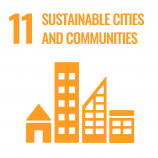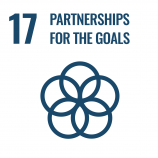The recommendations addressing the safe transport of dangerous goods developed under the auspices of the ECOSOC Committee of Experts are taken into account by the UNECE bodies dealing with land transport, to ensure harmonisation of provisions through all modes. At UNECE level this work is under the responsibility of the Working Party on the Transport of Dangerous Goods (WP.15). The Working Party:
- Initiate and pursue actions aimed at enhancing the safety and security of the inland transport of dangerous goods and protecting the environment during such transport;
- Develop and update the Agreement concerning the International Carriage of Dangerous Goods by Road (ADR), the European Agreement concerning the International Carriage of Dangerous Goods by Inland Waterways (ADN), and other relevant legal instruments on the transport of dangerous goods that ITC may charge it with administering;
- Ensure harmonization of ADR and ADN with other relevant legal instruments on the transport of dangerous goods by other modes of transport on the basis of the recommendations of the Committee of Experts on the Transport of Dangerous Goods and the Globally Harmonized System of Classification and Labelling of Chemicals of the United Nations Economic and Social Council;
Amendments to ADR and ADN requiring or calling for harmonization with provisions relating to the transport of dangerous goods by rail are prepared by the Joint Meeting of the RID Committee of Experts for the Carriage of Dangerous Goods of the Intergovernmental Organization for International Carriage by Rail (OTIF) and WP.15 (RID/ADR/ADN Joint Meeting) (WP.15/AC.1). The long‑standing cooperation between ECE and OTIF in the matter of organizing this joint meeting may be extended to other competent intergovernmental organizations administering international agreements on the international carriage of dangerous goods by rail that are applicable in Contracting Parties to ADR and ADN.
Amendments to the Regulations annexed to ADN are prepared by the Joint Meeting of Experts on the Regulations annexed to the European Agreement concerning the International Carriage of Dangerous Goods by Inland Waterways (ADN) (ADN Safety Committee - WP.15/AC.2), in partnership with the Central Commission for the Navigation of the Rhine (CCNR). Pursuant to the resolution adopted on 25 May 2000 by the Diplomatic Conference for the Adoption of a European Agreement concerning the International Carriage of Dangerous Goods by Inland Waterways (ADN), cooperation in organizing this joint meeting of experts could be extended to the Danube Commission.
SUSTAINABLE DEVELOPMENT GOALS
In 2015, seventeen Sustainable Development Goals (SDGs) were adopted by all UN member states, as part of the 2030 Agenda for Sustainable Development. The full list of SDGs, their history, related targets and indicators as well as information on their implementation progress is available at sdgs.un.org/goals.
In 2020 and 2021, the Inland Transport Committee (ITC) reiterated its wish to strengthen its contribution to the monitoring and implementation of the transport-related targets of the 2030 Agenda and requested its subsidiary bodies to align their work accordingly.
In 2022 and 2023, discussions took place during the sessions of the Working Party on the Transport of Dangerous Goods (WP.15), the ADN Safety Committee (WP.15/AC.2) and the RID/ADR/ADN Joint Meeting (WP.15/AC.1) on possible follow-up actions and contributions to United Nations 2030 Agenda for sustainable development in relation to their work on the carriage of dangerous goods by inland transport modes.
For the biennium 2021-2022, the Economic and Social Council (ECOSOC) also invited its subsidiary bodies (including the Committee of Experts on the Transport of Dangerous Goods (TDG) and on the Globally Harmonized System of Classification and Labelling of Chemicals (GHS) and its sub-committees on TDG and GHS) to consider the theme “Accelerating the recovery from the coronavirus disease (COVID-19) and the full implementation of the 2030 Agenda for Sustainable Development at all levels”. In this respect, both subcommittees TDG and GHS discussed proposals and it was agreed to summarize the interlinkage of their work to the SDGs which is currently available here.
Some of the SDGs and their related targets, specifically address the regulatory work and implementation activities of the subsidiary bodies of the ECOSOC Committee of Experts (CE) and/or those of the ITC/WP.15, as follows:
Subsidiary body: ECOSOC CE and ITC/WP.15
Develop mechanisms addressing the harmonization of classification and labelling criteria (GHS) and the transport conditions for land, air and sea (Model Regulations). Implements the transport of dangerous goods regulations based on the Model Regulations, such as those developed by WP.15 (i.e. ADR for road transport, ADN for inland waterways transport) and classification and labelling of chemicals in accordance with the GHS, ensures the safe transport, handling and use of hazardous chemicals. Thanks to these harmonization mechanisms companies, countries, workers and consumers have consistent and appropriate information on the chemicals they import, produce, handle, transport or use, as well as information about their physical, health and environmental hazards through their life cycle.
Subsidiary body: ECOSOC CE and ITC/WP.15
Develop mechanisms addressing identification of chemicals hazardous to the aquatic environment as well as the conditions to ensure their safe transport and handling through the GHS and the Model Regulations.
Their implementation through the Agreements concerning the International Carriage of Dangerous Goods by Road (ADR) and by Inland Waterways (ADN) contributes to minimise the risks of release into the environment thus preventing water contamination.
Subsidiary body: ITC/WP.15 and ECOSOC SC GHS
Both ADR and ADN agreements ensure mutual recognitions of certificates for vehicles, vessels, drivers, etc. and provide a framework for information exchange among Contracting Parties and thus contribute to reduce the number of checks and the overall waiting time at country borders for vehicles and vessels transporting dangerous goods. GHS defines a worldwide harmonized set of criteria for identification of hazards posed by chemicals and standardizing the hazard communication tools, thus protecting labour rights and ensuring safe working conditions. Workers in countries implementing them have access to the same level of protection and information, as regards the hazards and protective measures to be taken depending on the hazardous chemicals they use at the workplace.

Subsidiary body: ITC/WP.15
The subsidiary bodies shape the legal framework related to carriage of dangerous goods by inland transport modes to prevent accidents and damage to persons, property or the environment, to other goods or to the means of transport employed, including in urban environments. To reduce the environmental impacts, WP.15 is considering options to safely deliver dangerous goods in cities with lighter, more agile, and cleaner vehicles like three-wheelers or electric vehicles.
Subsidiary body: ECOSOC CE and ITC/WP.15
ECOSOC CE develops and updates the Model Regulations and the GHS, thereby contributes to achieve the environmentally sound management of chemicals and the transport of dangerous goods, in particular on provisions for the reuse of plastics material for packagings. WP.15 is working on provisions related to the circular economy and the sustainable use of natural resources including the reduction of transport related emissions of greenhouse gases and the recycling/repurpose of used cells and batteries, thus reducing waste production.
Subsidiary body: ITC/WP.15
To take urgent action to combat climate change and its impacts, WP.15 works on solutions to use electric vehicles and vehicles with cleaner and more efficient internal combustion engine for transport of dangerous goods. It also develops provisions on how to safely transport batteries and electrified vehicles at all stages of their life cycle.
Subsidiary body: ECOSOC CE and ITC/WP.15
ECOSOC CE develops and updates the Model Regulations and the GHS enhancing the identification of chemicals hazardous to the aquatic environment as well as the conditions to ensure their safe transport and handling, thus preventing pollution from land-based activities. The ADN Safety Committee continues its activities related to greening of the inland vessel fleet towards a modern, sustainable and resilient waterway network for the safe transport of dangerous goods and, thus, contributes to combat climate change and reduce hazards to the aquatic environment.

Subsidiary body: ECOSOC CE and ITC/WP.15
WP.15 focuses on their regulatory work on the safe transport of dangerous goods by road, rail and inland waterways in close cooperation and partnership with the Intergovernmental Organisation for International Carriage by Rail (OTIF) and the Central Commission for the Navigation of the Rhine (CCNR). A broad collaboration between all stakeholders involved in the international and multimodal transport of dangerous goods exists to regularly update the major international conventions and agreements on the carriage of dangerous goods, such as the RID, ADR and ADN, and also the IMDG, TI and SSR-61 in line with the UN Model Regulations developed by the ECOSOC Committee of Experts.
Secretariat services to the regulatory work, capacity building and analytical work related to dangerous goods
UNECE in close cooperation with OTIF and CCNR provides secretariat services to this regulatory work, capacity building and analytical work related to dangerous goods as follows:
ECOSOC
- CE: Develops mechanisms addressing the harmonization of classification and labelling criteria of chemicals and recommendations on the inland, sea and air transport of dangerous goods. Thanks to these harmonization mechanisms companies, countries, workers and consumers have consistent and appropriate information on the chemicals they import, produce, handle, transport or use, as well as information about their physical, health and environmental hazards through their life cycle.
- GHS SC: Develops and updates the Globally Harmonized System of Classification and Labelling of Chemicals (GHS) (ensures the safe transport, handling and use of hazardous chemicals).
- TDG SC: Develops and updates the Model Regulations on the Transport of Dangerous Goods (Orange Book) and its Manual of Tests and Criteria (MTC).
ITC/WP.15
- WP.15: Based on the Model Regulations, implements the carriage of dangerous goods on roads (ADR Agreement). ADR and ADN ensure mutual recognitions of certificates for vehicles, vessels, drivers, etc, and provide a framework for information exchange among Contracting Parties thus contributing to reduce the number of checks and the overall waiting time at the border of vehicles and vessels transporting dangerous goods.
- WP.15/AC.1: Coordinates the harmonization of the provisions of RID/ADR/ADN with the UN Recommendations on the Transport of Dangerous Goods, Model Regulations.
- WP.15/AC.2: Based on the Model Regulations, implements the carriage of dangerous goods on inland waterways (ADN Agreement). The implementation contributes to minimise risks of release into the environment thus preventing water contamination.
1: Including the International Maritime Dangerous Goods Code (IMDG) of the International Maritime Organization (IMO), the Technical Instructions (TI) of the International Civil Aviation Organization (ICAO) and the Safety Standards for Radioactive Material (SSR-6) of International Atomic Energy Agency (IAEA).

